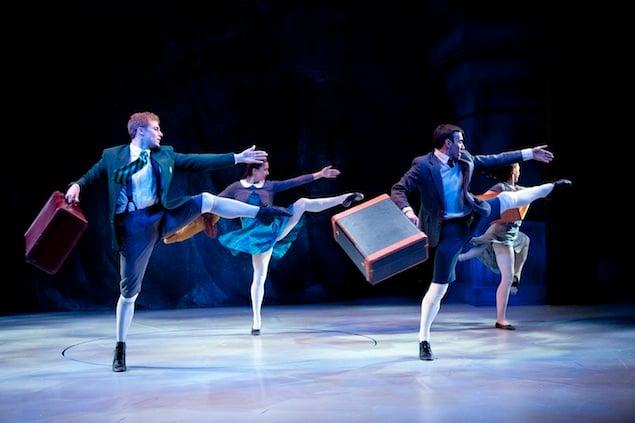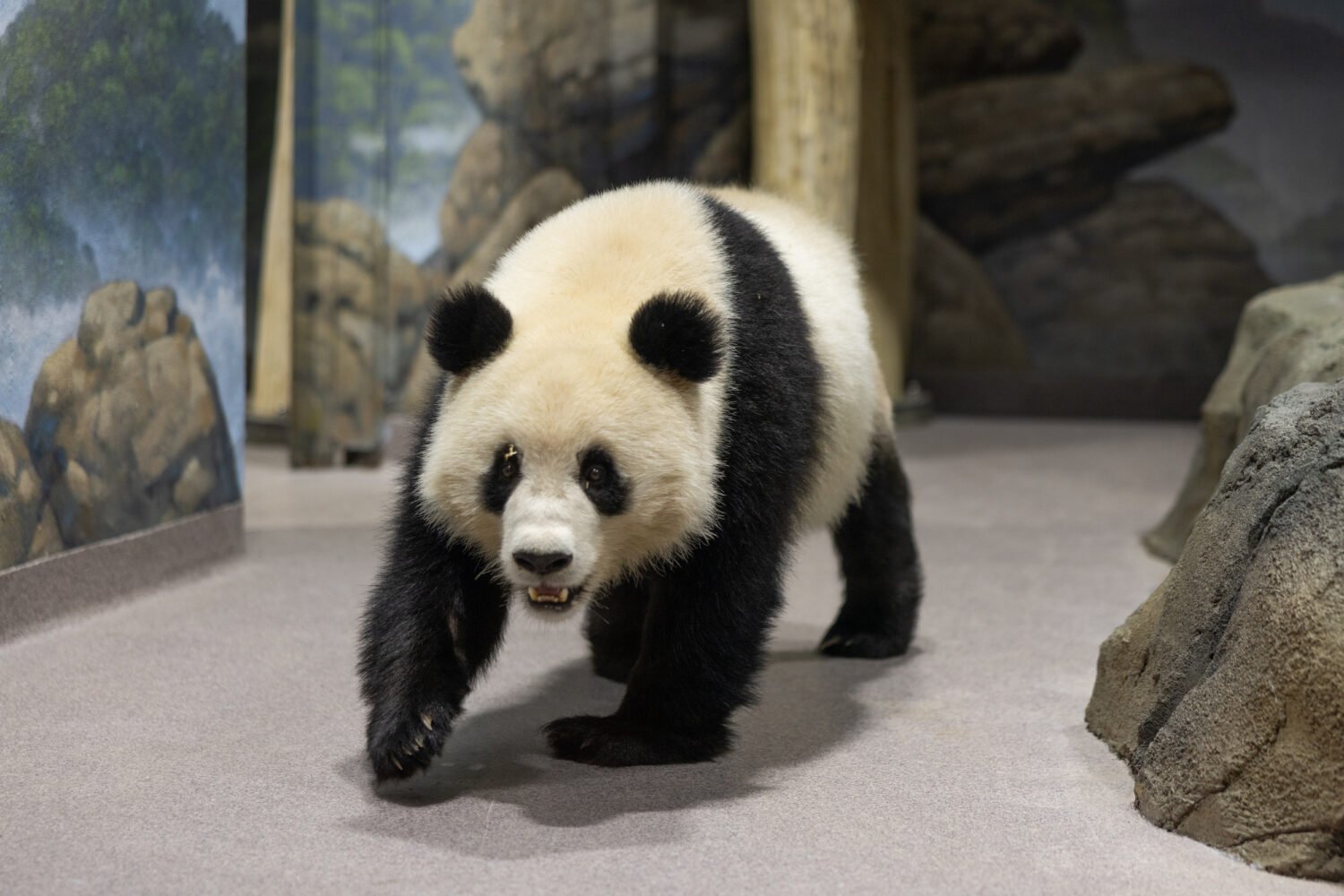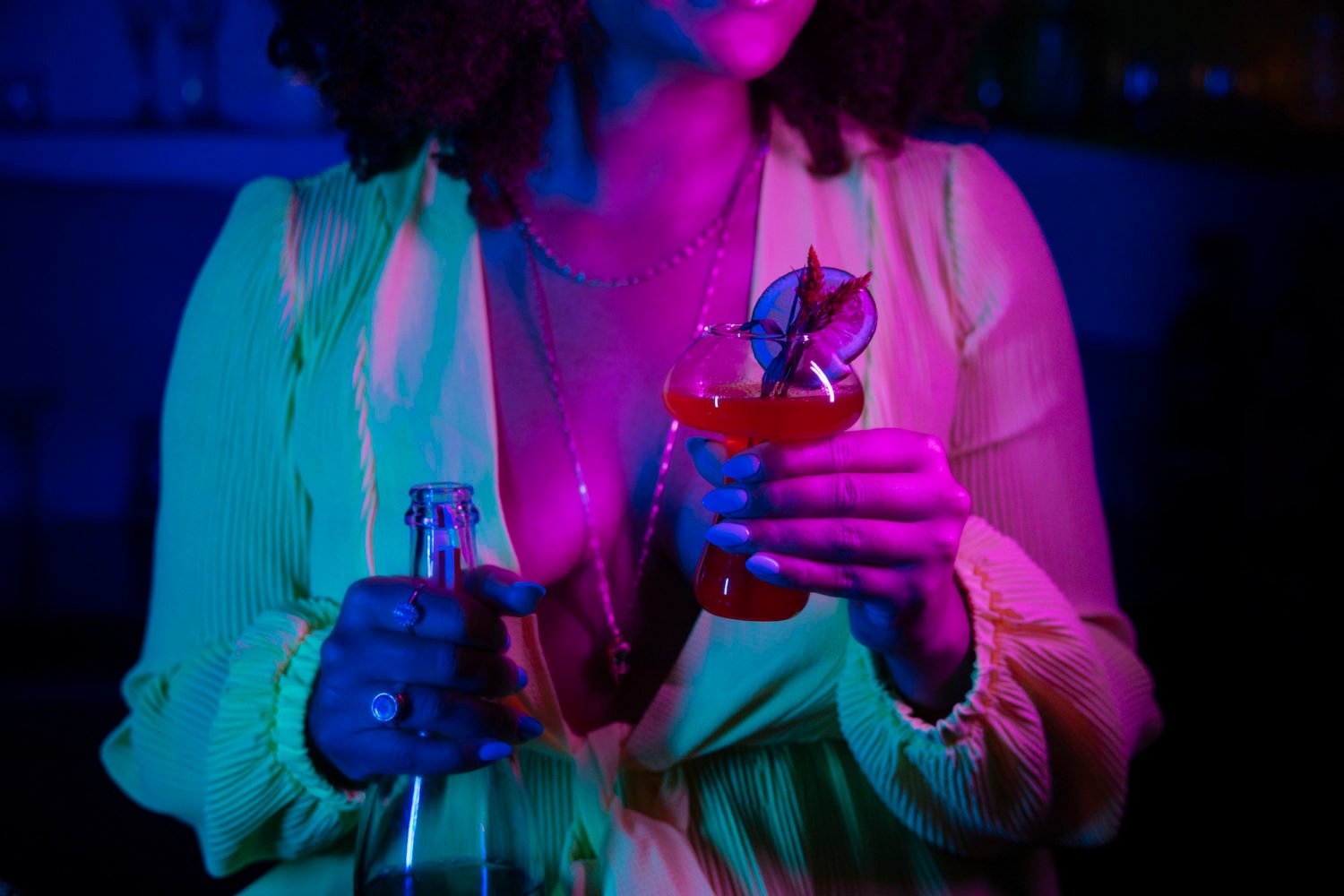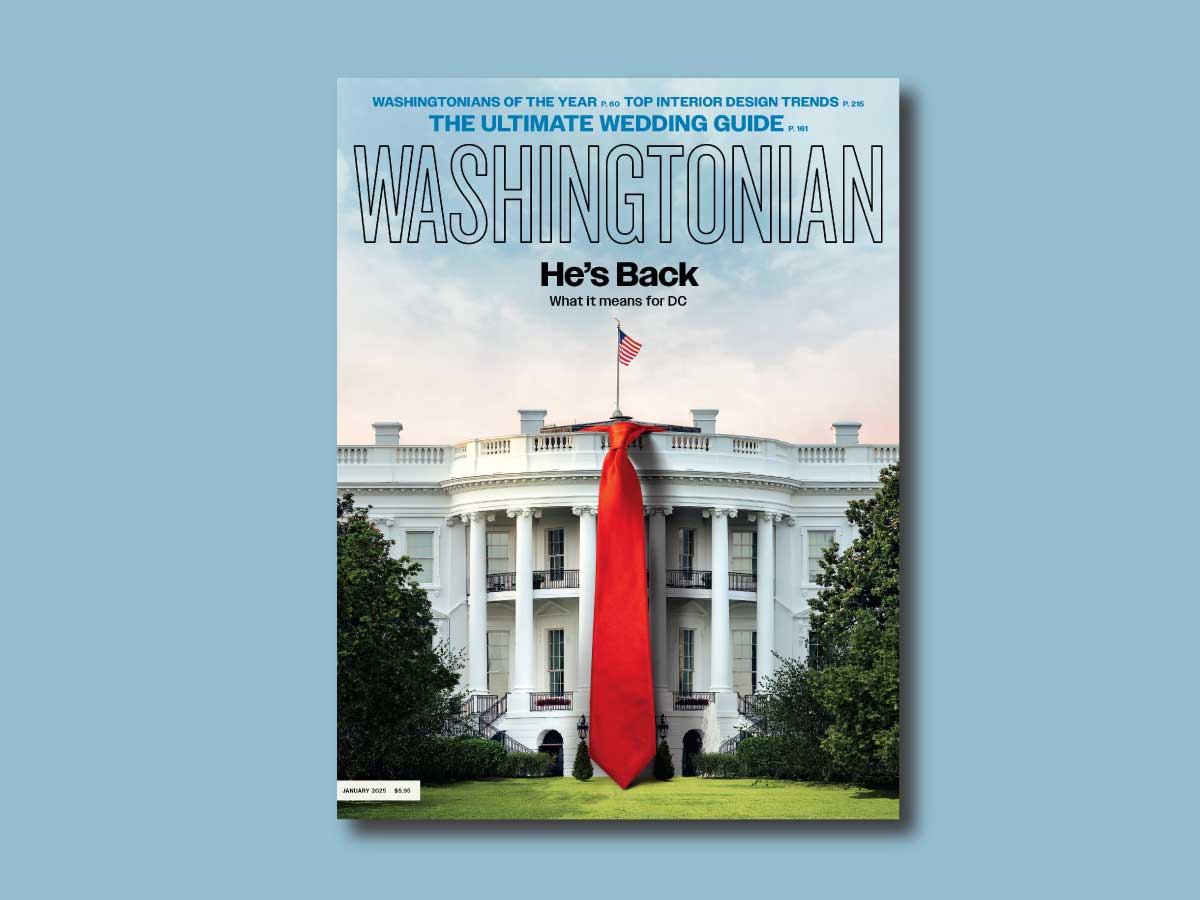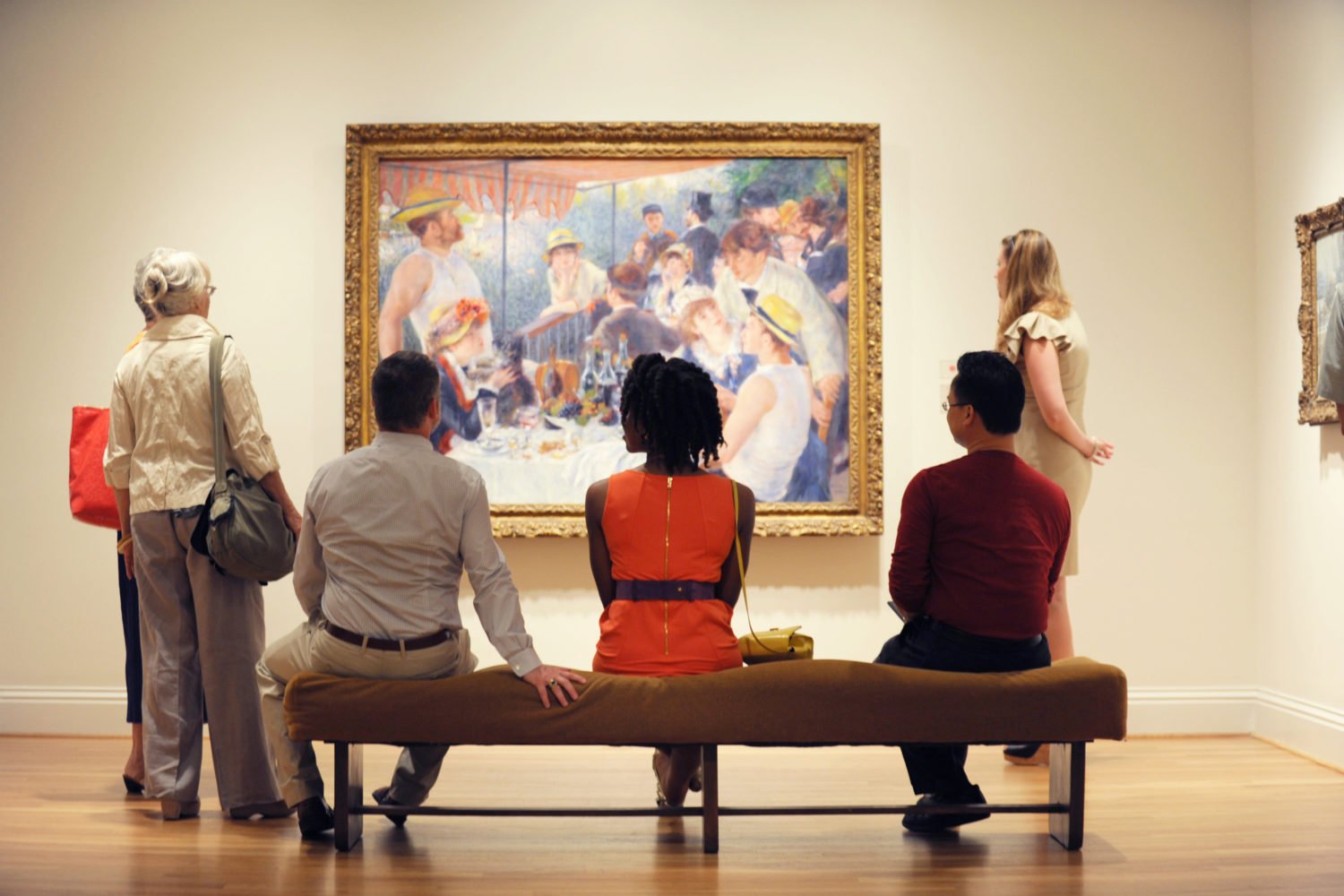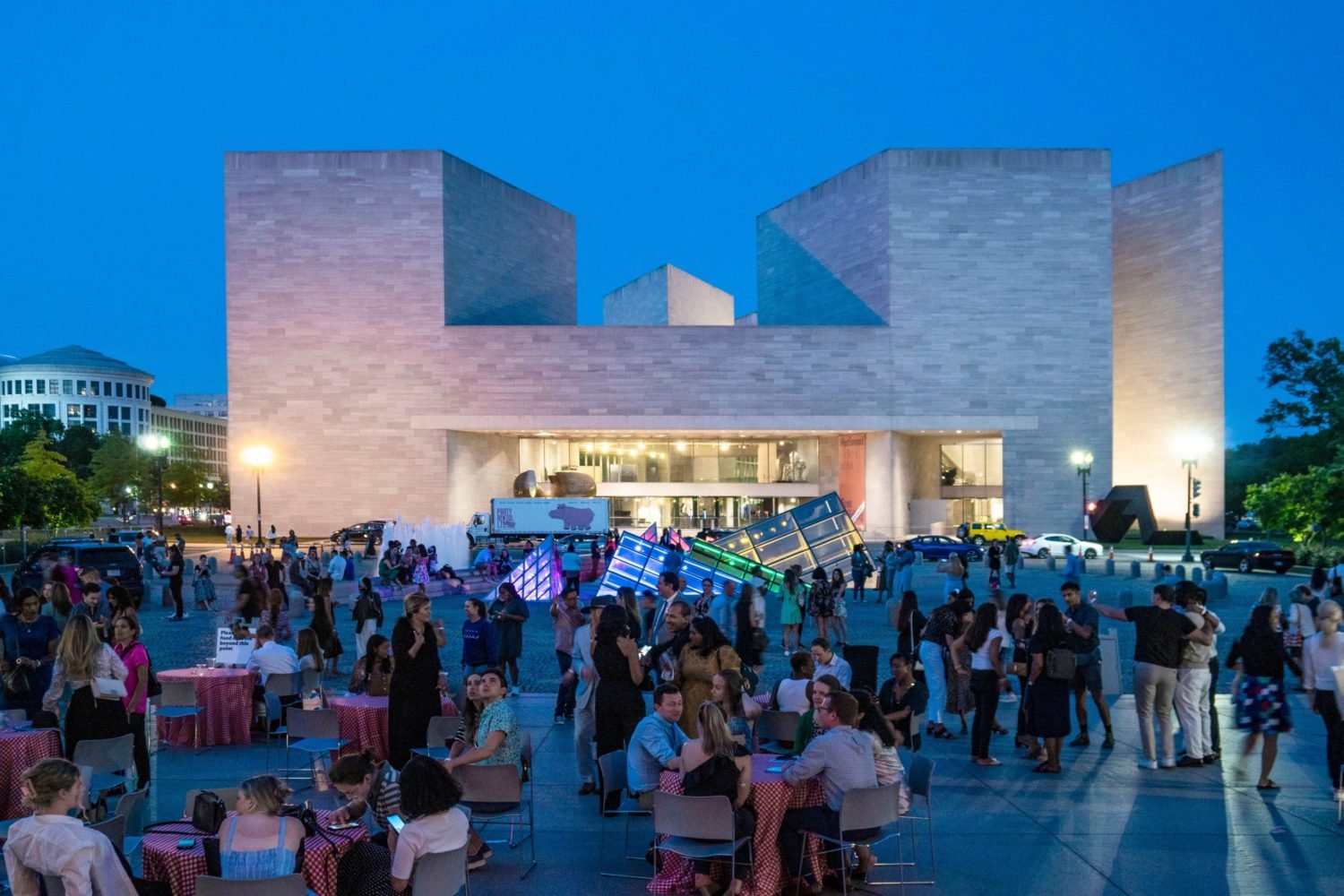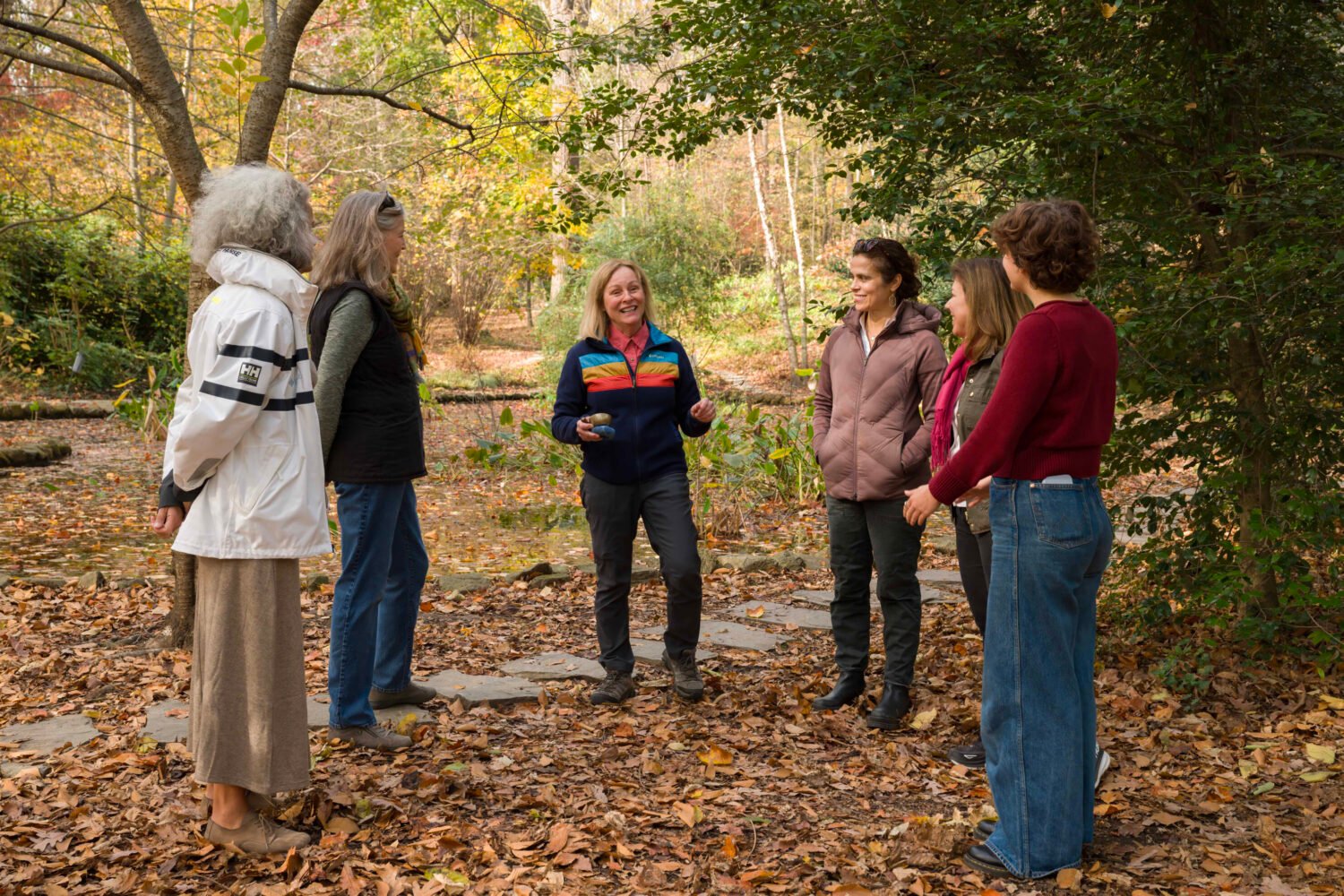
An inspired collaboration between Imagination Stage and the Washington Ballet, this gorgeous new musical adaptation of
The Lion, the Witch, and the Wardrobe offers a heady blend of dance, acting, singing, and grand-scale puppetry. Framing the cast’s uniformly strong and synchronized
performances are dreamlike scenery, eye-pleasing props, and a highly effective, even cinematic, score.
The young children down the row from us at Imagination
Stage had no problem following the narrative of the show (recommended
for ages five and older), even as we lost the thread from time
to time. They were likely familiar with the plot from the books
and/or the recent film adaptations of the classic “Narnia”
stories by C.S. Lewis. Both they and we were entranced by what
we saw and heard onstage in Bethesda. And they appeared to have
no trouble at all accepting the production’s central concept,
in which each of the four child protagonists is played by an
actor/singer
and a dancer.
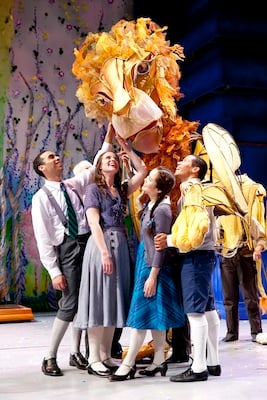
Most important, the production’s co-creators never
talk down to their young audience. As directed by Imagination Stage’s
artistic
head,
Janet Stanford, and choreographed by the Washington Ballet’s leader,
Septime Webre, and his associate artistic director,
David Palmer, a great range of feelings fills the stage—wonder, anguish, betrayal, forgiveness, redemption, triumph—none of them watered
down.
The Lion, the Witch, and the Wardrobe tells the tale
of four siblings in World War II-era England who are moved from London
to the countryside, where they discover
an antique wardrobe that acts as a doorway to the magical land
of Narnia. The show begins with the sound of air raid sirens
as actors carry miniature German bombers on sticks across the
stage. Lucy (Justine Moral), Edmund (Rafael Cuesta), and their older siblings, Peter (Christopher Wilson) and Susan (Kate Guesman), are sent out of London for
their own safety. It’s at this juncture that four dancers first appear
as the children’s interior
selves, dressed the same and carrying identical suitcases.
Through the rest of the show, they dance the characters’ feelings—in
classic ballet solos, pas de deux, and pas de quatres—when
words fail. Believe it or not, this is rarely confusing.
The children arrive at the country home of the kindly Professor (Michael John Casey) and his stern housekeeper, Mrs. McCreedy (danced by
Francesca Forcella at press night; the dance
roles are all covered by two performers, who will alternate throughout
the run). The younger children,
Lucy and Edmund, go through the wardrobe first and discover
Narnia; Lucy befriends a faun named Mr. Tumnus, and Edmund is
co-opted by the evil White Witch (danced by Forcella when we
saw it, voiced by
Sara Beth Pfeifer). When they return through
the wardrobe and bring their older siblings to Narnia, they learn of the
White Witch, Edmund’s
betrayal, and that Mr. Tumnus has been taken prisoner. They
also meet Mr. and Mrs. Beaver (Casey and Pfeifer), who tell the
children they must seek out the great lion Aslan, the
embodiment of goodness and courage, who will tell them what to do. This
leads to an epic battle: the children and Aslan versus the
White Witch and her minions.
A paragraph must be devoted to the gorgeousness of Aslan, who makes his entrance in act two. He is an imposing nine-foot puppet
made of wire and gold cloth, his body and legs operated by two quite visible puppeteers (Betsy Rosen and
Tracy Ramsay) and his head and roar controlled by the always-stellar Casey. The genius of designer
Eric Van Wyk’s creation lies in how truly leonine the puppet’s appearance and movements are, from his running gait to his zoologically
perfect paws. His head—part abstract metal sculpture, part king of beasts—has grandeur to spare.
Van Wyk also designed the lovely scenery, which seems
lavish while actually being rather spare. His scenic triumph is the
wardrobe itself. When the children pass through it into Narnia,
the top lintel floats upward, the doors disappear, snowy curtains
descend, the lighting (by
Colin K. Bills) shifts, and the children emerge through the curtains into Narnia. It is a magical moment. The costumes, by
Kathleen Geldard, evoke character effortlessly
between the actor/singers and the dancing versions of them. The
children’s mother, for example,
appears in a fur coat. The dancing incarnation of her, as she
sings farewell at the station, has a little fur collar and hat.
Imagination Stage’s Stanford and
Kathryn Chase Bryer worked with Washington Ballet’s Webre and Palmer on the overarching concept. Stanford wrote the libretto and the rather somber
lyrics, with additional lyrics by
Bari Biern. Composer
Matthew Pierce didn’t craft treacly, hummable tunes for this story. The songs and background score use lots of chromaticism and occasionally,
in the most harrowing moments, screeching strings. You can’t hum Pierce’s score, but it works.
Lewis intended his fables as a Christian allegory for
young people, but children brought up in non-Christian traditions will
identify with the characters, too. And everyone can enjoy this
complex theatrical concept that comes together—and comes across—with
delightful ease.
The Lion, the Witch, and the Wardrobe
is at Imagination Stage through August 12. Running time is about 90 minutes, including one intermission. For ages five and
older. Tickets ($10 to $27) are available via Imagination Stage’s website.

